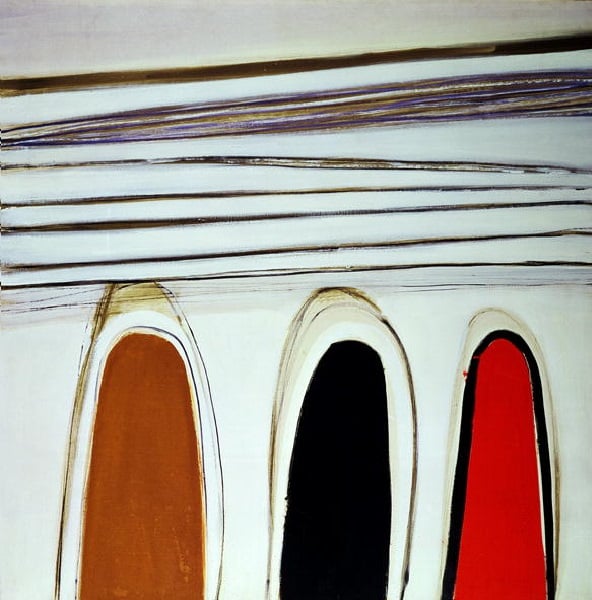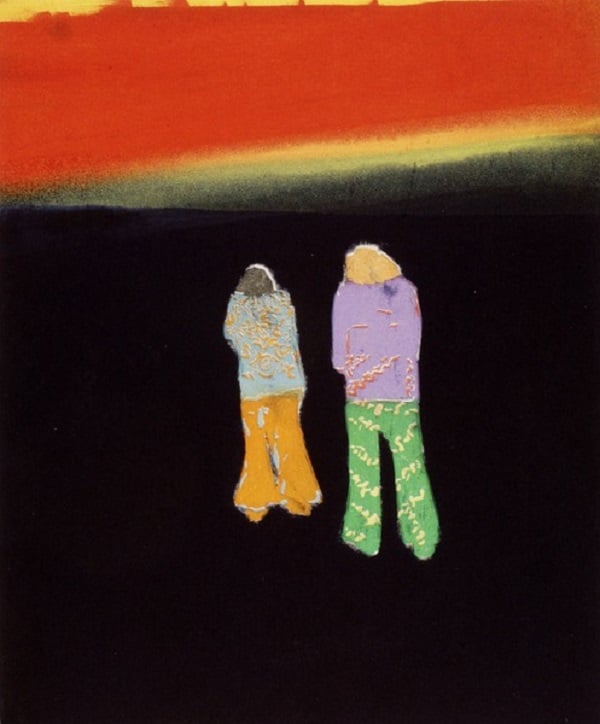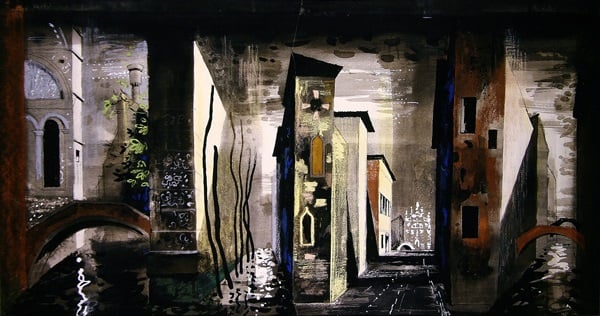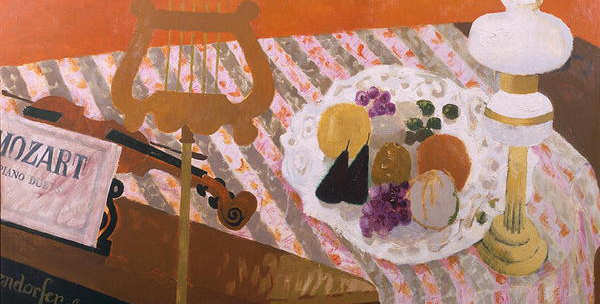
Rhythm-on-Thames: ‘Artists and Music’ at the Bohun Gallery
The difficulty with asking the question as to music’s influence on an artist is that a satisfactory answer is rarely achieved. At first the two seem at odds with one another; art has no problem ‘representing’ its subject but struggles to inject tangible emotion, while music’s conflict is the polar opposite. But the Bohun Gallery in Henley-on-Thames have taken this ‘question’ and broken it down, curating an exhibition titled ‘Artists and Music’ that looks at a broad range of British 20th century artists and the multitude of musical styles they were exposed to.
Movement and Rhythm
The works of Sir Terry Frost immediately catch the eye, their placement in an exhibition titled ‘Art and Music’ is at first confusing. With further observation however one begins to identify a certain rhythmic structure, his use of colour and line creating a composition that seems to have a certain musicality to it. I suppose you could suggest the fact that the works are placed in an exhibition such as this forces the viewer to come to conclusions and find connections that he would not otherwise have found. However, when put alongside the work of Paul Klee (1879-1940), an artist that did base most of his late work on the principles and forms in music, their similarities are more immediate. Both have preserved form and, alongside colour and line, there is suggested sense of movement and rhythm.
Musical Instruments
Other artists in the exhibition have perhaps a more overt relationship with music in their work. Mary Fedden and Julian Treveylan’s love for music is obvious; guitars and pianos populate their works and act not as props but are used by the characters. In Treveylan’s work especially, the viewer is seemingly challenged to ‘hear’ the music being ‘played’ in the picture; music therefore acts not just an influence on the artist but possibly the viewer as well. It also happens to be the 100th anniversary of Mary Fedden’s birth.
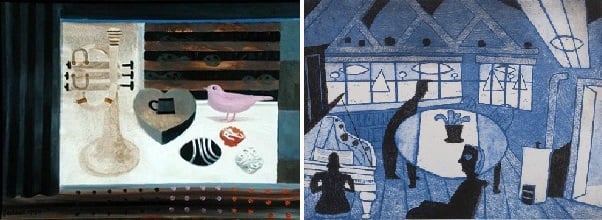
Left: The Pink Bird, 1996 (oil on canvas), by Mary Fedden, (1915-2012) © Royal West of England Academy
Right: Water Music, 1984 (etching & aquatint), by Julian Trevelyan (1910-88), Bohun Gallery
Opera
A slightly more obscure but very interesting addition to this exhibition is the work of Tom Hammick, artist in Residence for the English National Opera and whose images Bridgeman have been representing for a number of years. This residency with the Opera company has allowed him to create a new body of work that perhaps moves away from his previous subject matter but still retains his intuitive organic rendering of figure and form. From this operatic influence can be seen, although not directly, a sense of Wagner’s ‘total art work’; the idea that music, poetry and the written word could all be combined in Opera, where each influences the other. John Piper’s backdrop for Benjamin Britten’s opera Death in Venice, is the showpiece of this exhibition, and testament to arts influence on music and vice versa.
Jazz and Pop
It is in Sir Peter Blake’s work that the exhibition finds its most direct example of art and music’s relationship. In his Manhattan Boogie Woogie album cover he appears to be depicting an American jazz genre in all its forms. Boogie Woogie was known for its strong beat and improvisation and became the voice of young 30’s America. Blake’s image has a number of musical references but perhaps the most interesting is a cut-out of Piet Mondrian’s (1872-1944) Broadway Boogie Woogie in the top left hand corner, a reference to the title of the piece but perhaps more subtly an indication of the albums musical style. Late in his career in fact Mondrian began to create images that were almost literal representations of pieces of music, the dotted colours different notes and chords; a fully realised depiction of music through art. Blake’s creation of this Pop art style merged fine art with popular culture and in doing so attempted to form a ‘culture of arts’, not too dissimilar to Wagner’s ‘total art work’ a hundred years previously.
The exhibition is brilliantly varied in the subject matter and style on show while still remaining focused on the key question; music’s direct or indirect influence on the displayed artists. So, while the rowers at Henley struggle to find their rhythm this summer, perhaps a more cohesive beat can be found coming from the Bohun gallery next door.
Artists and Music, The Bohun Gallery, 15 Reading Road, Henley-on-Thames, between 13th June and 15th August.
Find out More
Bridgeman Artists’ Copyright Service. For over 40 years, Bridgeman has provided a service for artists and artists’ estates, to administer their entire copyright and sell reproduction licences of their work.
Contact the sales team on uksales@bridgemanimages.com for more information regarding licensing, reproduction and copyright or see our Bridgeman Artist Copyright page.
Save

